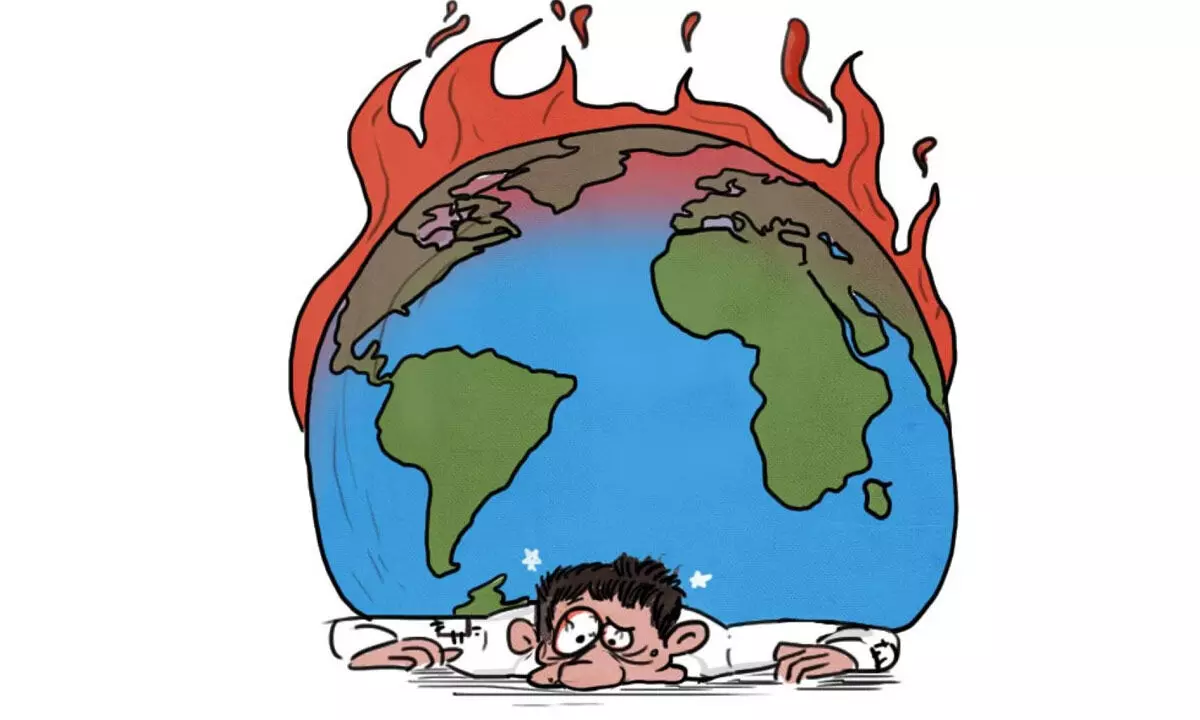Climate change: It’s all about money

Representational image
Climate finance can no longer be the money that goes to only increase the indebtedness of countries and makes them even more vulnerable to the next disaster
It is abundantly clear that the world is being battered by extreme weather events because of climate change. It is also equally clear that the burden of these devastations is disproportionate — they hit the poor in the poorest countries hardest.
Climate finance is not just payment or reparations needed to mitigate and adapt to these disproportionate impacts of climate change. It is also about providing finances for the transition that these countries still need, to develop. They need to develop differently, so that they can grow without adding as much to the stock of emissions that will further jeopardise our common existence.
This is why climate justice — as enshrined in the 1992 UN Framework Convention on Climate Change (UNFCCC) — matters so much.
It was agreed that countries responsible for the stock of emissions in the atmosphere (historical polluters) would need to reduce emissions. It was also agreed that the rest of the world, which had the right to development, would be provided with the finance and technology to grow sustainably. However, over the past 30 years, the world has convened countless conferences only with the intention of diluting and erasing this principle. But the issue of equity, like the changing climate, will not go away. Today, 70 per cent of the world’s population has still not secured development in terms of energy or other essentials needed for their well-being.
Meanwhile, the world has practically run out of the carbon budget to limit warming to below the guardrail of 1.5 degrees Celsius (°C) above the pre-industrial period. It is also clear now that the $100 billion a year pledged in 2009 — which is still illusionary — maybe too little, too late. It is a fraction of what is needed for securing a different development future in our world.
So, we need to find the money and we need to do this fast. But this is not all. We also need to discuss structural issues that underpin the vast inequities in the world, which make it certain that countries in the Global South cannot afford the price of adaptation or mitigation. My colleagues have put together a report, aptly titled Beyond Climate Finance, which helps deconstruct this issue and suggest the way ahead.
We know that the quantum of money called climate finance is inadequate. We know that there is no agreed definition of what the world means by climate finance, and this allows for much creative accounting.
But what we do not know, or discuss, is that whatever is being given in the name of climate finance is not concessional — roughly 5 per cent is grants and the rest is loans or equity. It is also then no surprise that what is termed as climate finance is not going to the countries where it is needed most. It is no surprise because these funds go where there is opportunity to make money; where there is (at least perceived) less risk in the financial market stability; and so, where the cost of finance is lower.
The cost of finance (interest rates) to, say, set up a solar plant, would be 2-5 per cent in Europe; 12-14 per cent in Brazil; and as high as 20 per cent in some African countries. This would make the plant unfeasible in Brazil and African countries. It would not happen. Period. Worse, if this money goes to Africa in the form of loans — as it invariably does, with high interest rates — it would only add to their problem of repayment of loans.
Countries cannot afford to default on a loan as that makes their credit ratings worse. But climate change will make it worse because the most vulnerable countries are also the ones with high debt burden. Every climate change disaster takes these countries to greater indebtedness as they borrow to survive and rebuild. These same countries are then stamped with poor credit ratings, which make their cost of borrowing and capital even higher.
I am not even getting into the inbuilt bias of the global rating system, but it is clear it is designed to make countries fail. Today, the most vulnerable countries, which also need funding for climate mitigation, have a crushingly high debt burden — the money they pay in annual interest is as high as 16 per cent of their governmental revenue in 2023.
So, we can no longer talk about small changes, or about short-changing the poor. There are proposals on the table to unlock new money for concessional finance. The most notable is called the Bridgetown Agenda — with the clarion call coming from the formidable Prime Minister Mia Mottley of Barbados.
We need answers and fast. The bottom line is that climate finance can no longer be the money that goes to only increase the indebtedness of countries and makes them even more vulnerable to the next disaster.
So, let’s get real about the need for real money for this existential crisis called climate change.
(Writer is Director General of CSE and editor of Down To Earth, an environmentalist who pushes for changes in policies, practices
and mindsets)














